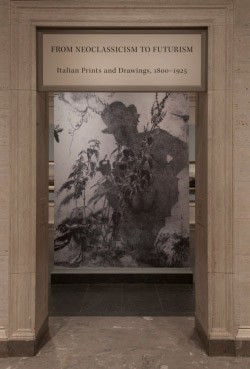The visual arts in Italy were extraordinarily diverse and dynamic during the long, tortuous formation of the modern Italian state—from the first stirrings of nationalism around the time of Napoleon’s campaigns (1796–97) through unification as the Kingdom of Italy (1861) until the country’s descent into fascism (1925). Nonetheless, Italian art of this era has been overshadowed by the monumental achievements of the culture’s past, from ancient Rome through the baroque period. Moreover, Italian art after the eighteenth century has been neglected in the usual histories of modern art, which have emphasized the more consistent direction and developments in other countries, especially France. Instead, recognizing the distinct importance and richness of the period’s art, the National Gallery of Art has begun to build a collection of nineteenth- and early twentieth-century Italian prints and drawings. Broad in scope, deep in a number of areas, and excellent in quality, this collection is unparalleled outside a few museums in Italy itself.
This exhibition is an introduction to both this little-known period and the Gallery’s initiative. It consists of seventy-two prints, drawings, and illustrated books from the nearly two hundred acquired in recent years, divided into three sections. The first considers the persistence of traditional styles along with the dominant role of art academies through the first half of the nineteenth century. It features engravings after admired works of the past, neoclassical compositions, stage designs, and topographic views. The second section concerns the late arrival but long embrace of romantic ideals, which emphasized naturalism, individual expression, and original approaches to printmaking through the end of the century. The third section is devoted to critical precursors of modernism, like Giovanni Fattori and Giovanni Boldini; to futurism, the radical and short-lived movement of the early twentieth century; and to such singular figures of early modern art as Giorgio Morandi. The sheer number of styles, the multiple centers of activity (Turin, Rome, Naples, Milan, Florence), and the eccentricity of many of the artists distinguish this period of art in Italy from elsewhere in Europe.
